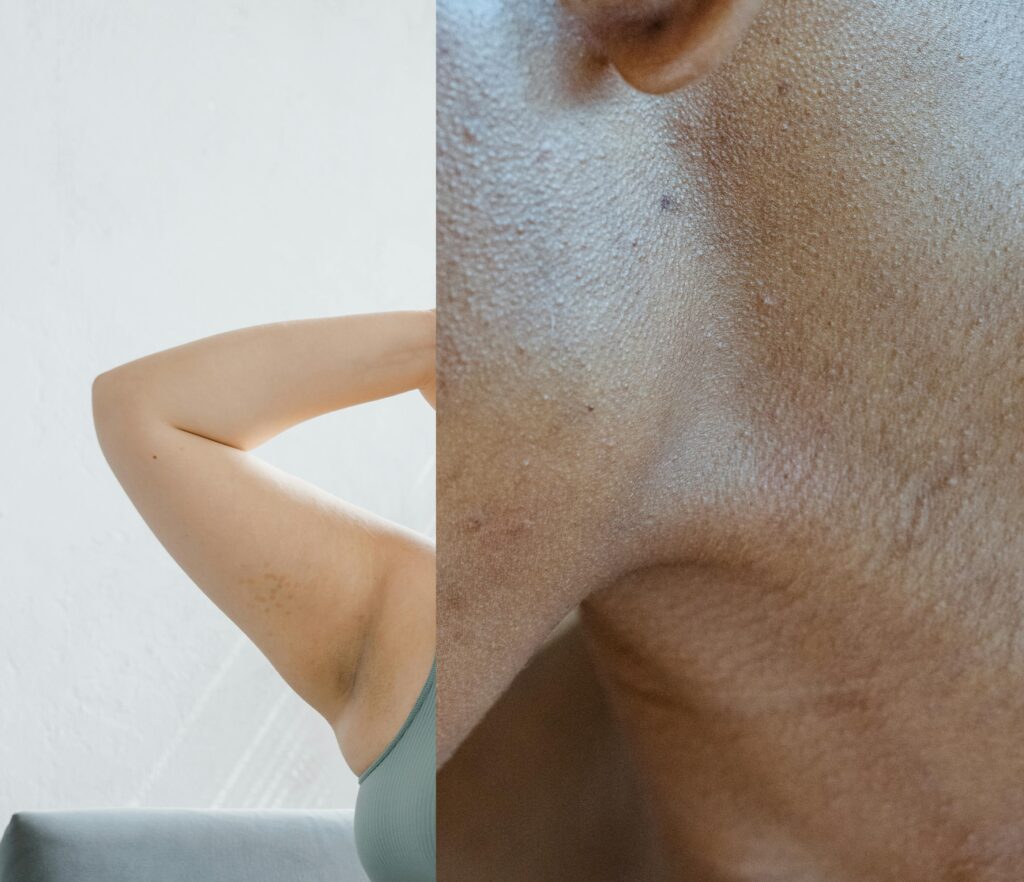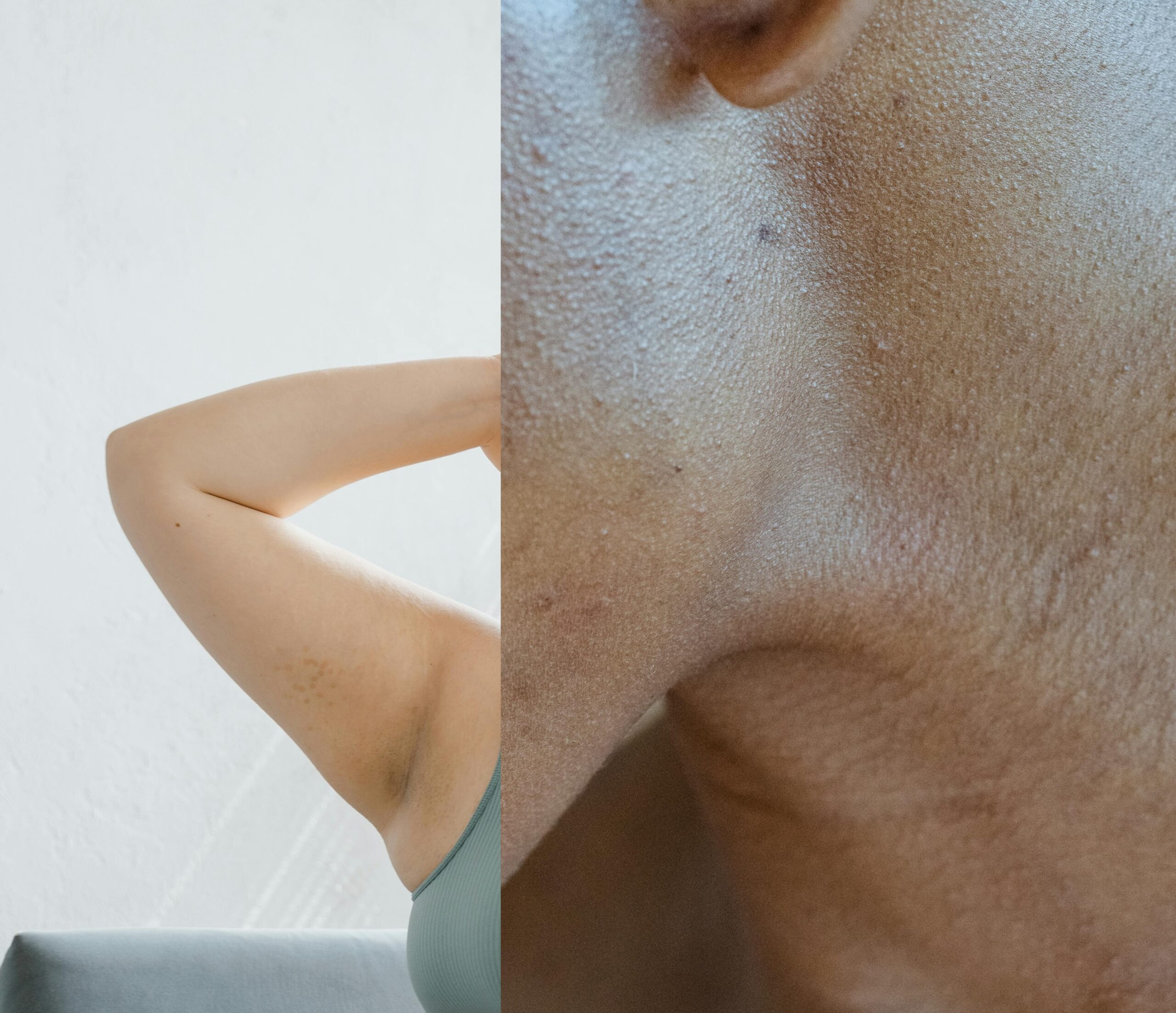Table of Contents

Introduction
Acanthosis Nigricans (AN) is a skin condition characterized by dark, thickened patches, usually found in body folds such as the neck, armpits, and groin. These velvety-textured patches are often associated with insulin resistance, obesity, hormonal disorders, and certain medications. While AN is not harmful in itself, it can be a sign of an underlying health issue and can have a significant impact on a person’s self-esteem and quality of life. Treating Acanthosis Nigricans effectively requires a combined approach that involves both dermatology and cosmetology. This article explores how these two fields can work together to provide comprehensive care for individuals suffering from this condition.
Understanding Acanthosis Nigricans
What is Acanthosis Nigricans?
Acanthosis Nigricans is a dermatological condition that manifests as hyperpigmented, thickened skin in specific areas of the body. These areas often feel velvety to the touch and can range in color from light brown to black. Although not a disease in itself, AN is often a sign of underlying medical conditions such as insulin resistance, obesity, hormonal imbalances, or even malignancies. It is more commonly seen in people with darker skin tones and those with a family history of the condition.
Causes of Acanthosis Nigricans
Acanthosis Nigricans can have several causes, with the most common being insulin resistance, which is often associated with type 2 diabetes and obesity. When the body becomes resistant to insulin, it compensates by producing more, leading to higher insulin levels. These elevated insulin levels stimulate skin cells to reproduce rapidly, leading to the characteristic thickening and darkening of the skin. Other causes include:
- Genetics: Acanthosis Nigricans can be inherited, particularly in families with a history of the condition.
- Hormonal Disorders: Conditions such as polycystic ovary syndrome (PCOS) and hypothyroidism can trigger AN.
- Medications: Certain drugs, including corticosteroids and hormone therapies, can lead to the development of AN.
- Malignancies: In rare cases, Acanthosis Nigricans can be a paraneoplastic syndrome associated with internal malignancies, particularly gastric cancer.
Diagnosis of Acanthosis Nigricans
Diagnosis of Acanthosis Nigricans is primarily clinical, based on the appearance of the skin. However, identifying the underlying cause is crucial. Physicians may conduct a thorough medical history review, physical examination, and order blood tests to check for insulin levels, blood sugar levels, and hormonal imbalances. In cases where malignancy is suspected, additional imaging studies and biopsies may be necessary.
The Role of Dermatology in Treating Acanthosis Nigricans
Medical Treatments for Acanthosis Nigricans
Dermatological treatments for Acanthosis focus on managing the underlying causes and improving the appearance of the skin. Medical interventions may include:
- Topical Retinoids: These are commonly prescribed to help reduce the thickness of the skin and improve skin turnover. Retinoids such as tretinoin can be effective in lightening the hyperpigmented areas over time.
- Keratolytic Agents: Products containing salicylic acid, urea, or alpha-hydroxy acids can help exfoliate the thickened skin, leading to gradual improvement.
- Antibacterial Soaps and Topical Antibiotics: In cases where bacterial colonization is a concern, these can help manage the condition and prevent infections.
Systemic Treatments
When Acanthosis is associated with systemic conditions such as insulin resistance, treatment of the underlying condition is essential. This may involve:
- Metformin: Often prescribed for managing insulin resistance, Metformin can help reduce insulin levels, thereby decreasing the stimulus for skin thickening.
- Weight Management: Achieving and maintaining a healthy weight through diet and exercise can significantly reduce insulin resistance and improve the appearance of AN.
- Hormone Regulation: Treating underlying hormonal imbalances with appropriate therapies can also lead to significant improvement.
New and Emerging Treatments
Recent advances in dermatology have introduced novel treatments for Acanthosis Nigricans. These include:
- Laser Therapy: Laser treatments such as Nd
and CO2 lasers have shown promise in reducing the pigmentation and thickness of affected skin.
- Chemical Peels: Peels containing trichloroacetic acid (TCA) or glycolic acid can help exfoliate the skin, promoting the regeneration of normal skin cells.
- Microneedling: This minimally invasive procedure can help improve skin texture and promote collagen production, leading to an overall improvement in the appearance of AN.
The Role of Cosmetology in Treating Acanthosis Nigricans
Skincare Routines and Products
Cosmetology plays a crucial role in managing the cosmetic aspects of Acanthosis Nigricans. A personalized skincare routine can complement medical treatments and improve skin appearance. Key components of a skincare routine for AN include:
- Cleansing: Using gentle, pH-balanced cleansers can help maintain the skin barrier and prevent irritation.
- Exfoliation: Regular exfoliation with mild chemical exfoliants like lactic acid or enzyme-based products can help remove dead skin cells and reduce thickening.
- Moisturization: Keeping the skin well-hydrated with non-comedogenic moisturizers can help maintain skin health and prevent further thickening.
- Sun Protection: Since UV exposure can worsen hyperpigmentation, daily use of a broad-spectrum sunscreen is essential.
Camouflage Makeup
For individuals seeking immediate improvement in the appearance of Acanthosis, camouflage makeup can be an effective option. This type of makeup is designed to cover hyperpigmentation and create an even skin tone. Products with high pigment concentration and a matte finish are often recommended, as they provide long-lasting coverage and minimize shine.
Professional Cosmetic Procedures
In addition to skincare routines and makeup, professional cosmetic procedures can play a vital role in managing Acanthosis. These include:
- Microdermabrasion: This non-invasive procedure involves the mechanical exfoliation of the skin, which can help reduce the thickness and darkness of the affected areas.
- Chemical Peels: As mentioned earlier, chemical peels can be performed by licensed cosmetologists to improve skin texture and tone.
- Laser Treatments: Cosmetologists trained in laser therapy can perform treatments to target hyperpigmentation and promote skin renewal.
Integrating Dermatology and Cosmetology: A Holistic Approach
The Importance of a Multidisciplinary Approach
Effective treatment of Acanthosis requires collaboration between dermatologists and cosmetologists. While dermatologists focus on the medical aspects of the condition, cosmetologists can enhance treatment outcomes by addressing the cosmetic concerns of patients. This multidisciplinary approach ensures that both the underlying causes and the visible symptoms are managed comprehensively.
Example
In the literature, several case studies have demonstrated the effectiveness of a combined dermatology and cosmetology approach in treating Acanthosis. For instance, a patient with obesity-related AN underwent weight management therapy and topical retinoid treatment, combined with chemical peels and camouflage makeup. Over six months, the patient experienced significant improvement in both the texture and appearance of their skin, as well as enhanced self-esteem.
In another case, a patient with PCOS-related AN was treated with hormone regulation therapy and laser treatments, followed by a personalized skincare routine. The multidisciplinary approach led to a marked reduction in skin thickening and hyperpigmentation, with long-lasting results.
Patient Education and Support
Educating patients about Acanthosis Nigricans and its treatment options is crucial for achieving successful outcomes. Dermatologists and cosmetologists should work together to provide comprehensive education on:
- Understanding the Condition: Helping patients understand the underlying causes and treatment options for AN.
- Skincare Practices: Teaching patients how to maintain a skincare routine that supports treatment and improves skin health.
- Lifestyle Modifications: Emphasizing the importance of weight management, diet, and exercise in managing insulin resistance and other underlying conditions.
- Mental Health Support: Addressing the psychological impact of Acanthosis Nigricans and providing support for improving self-esteem and body image.
Conclusion
It is a complex condition that requires a multifaceted approach to treatment. By combining the expertise of dermatology and cosmetology, healthcare providers can offer comprehensive care that addresses both the medical and cosmetic aspects of the condition. From medical treatments like topical retinoids and laser therapy to cosmetic interventions like skincare routines and camouflage makeup, this integrated approach can significantly improve the quality of life for individuals suffering from Acanthosis Nigricans.
Frequently Asked Questions (FAQs)
What is Acanthosis Nigricans?
Acanthosis Nigricans is a skin condition characterized by dark, thickened patches, often associated with insulin resistance and obesity.
How is Acanthosis Nigricans treated?
Treatment involves addressing the underlying cause, using topical medications, and possibly cosmetic procedures like chemical peels and laser therapy.
Can Acanthosis Nigricans be cured?
While the underlying cause can be managed, the skin changes may persist but can be improved with treatment.
Is Acanthosis Nigricans dangerous?
The condition itself is not harmful but can be a sign of underlying health issues like insulin resistance or, in rare cases, cancer.
Can Acanthosis Nigricans go away on its own?
If the underlying cause is treated, the condition may improve, but it often requires medical and cosmetic intervention.
Is Acanthosis Nigricans contagious?
No, Acanthosis Nigricans is not contagious.
How can I prevent Acanthosis Nigricans?
Maintaining a healthy weight, managing insulin resistance, and addressing hormonal imbalances can help prevent the condition.
Are there any home remedies for Acanthosis Nigricans?
While home remedies like exfoliation can help, medical and cosmetic treatments are often necessary for significant improvement.
References
https://www.mdpi.com/2075-4418/12/10/2519
https://www.ncbi.nlm.nih.gov/pmc/articles/PMC6086114
https://www.mdpi.com/1422-0067/21/23/8960
https://www.mdpi.com/2077-0383/9/8/2611
https://www.mdpi.com/2075-4418/13/7/1290
https://www.mdpi.com/1422-0067/21/6/2178
YouTube Linkhttps://youtube.com/shorts/6TSOhgKq90w?feature=share

